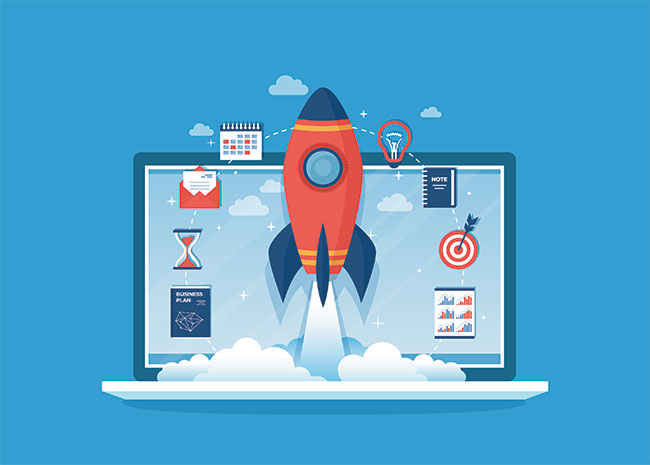SPONSORED CONTENT
 Our clients are demanding increasingly faster and better insights and that is testing the industry to create the best technology platforms and to hire the best people to help bring those insights to life.
Our clients are demanding increasingly faster and better insights and that is testing the industry to create the best technology platforms and to hire the best people to help bring those insights to life.
Even a few years ago, a negative event such as announcing a new driverless car feature at the same time as a fatal accident involving one of the company’s existing autonomous vehicles would leave any auto company struggling to respond effectively to stakeholders. An almost complete blackout of insights in the first days of a crisis meant companies often made huge errors in tone and approach. They simply had no idea what their clients, partners and regulators – spread throughout the world – would want to know. Most could only issue a cookie-cutter press release explaining that they were working hard with officials to assess and remedy the situation.
Today, that just isn’t enough.
Companies want to know what their various stakeholders are thinking and feeling. These insights give company leaders the ammunition to craft a response that keeps their supportive stakeholders onside and mollifies skeptics.
Clients increasingly demand near-real-time insights without geographic limits as well as the ability to interpret the insights and act on them quickly. We are moving rapidly towards a world where an auto company could figure out within an afternoon exactly what its stakeholders needed to hear. That information is worth millions in terms of reputation damage. It could allow the company to avoid customer boycotts, for instance, that could cost it millions.
Bringing insights to life
I’m thrilled to be on the front lines of the battle to deliver marketing research that is agile, automated and fast. Our goal is to bring insights to life – and do it faster and better than it has ever been done. Our clients – and all consumer industries – need a platform that delivers data that helps them make sound business decisions.
We no longer have the luxury of waiting for consultants to design and launch a survey to return to us in a few months’ time with information we could act upon. We can now execute a global survey from design to analysis in two weeks rather than six months. Today, every hour counts.

We know the true value of insights that companies can use to improve their products, their branding and the lives of their customers. We helped consumer goods giant Kraft design its first corporate brand campaign in a way that would resonate with both parents and children. The outcome of the research was that Kraft was able to overcome the unease parents felt using easy boxed meals like Kraft macaroni and cheese because it also learned that children would rather have the extra time to spend hanging out with their parents rather than having meals cooked from scratch.
The analytical ability of our teams and of our client teams is paramount. To get usable insights we must start with good survey design on the front end. And this demand is taking place with the backdrop of increasingly sophisticated options. No longer are we limited to simple surveys. We can include such useful features as text highlighters that enable packaging, advertising and marketing copy to be evaluated by respondents who indicate the words or phrases that are liked, disliked or deemed confusing. We can also design features such as surveys that are logical so that survey respondents are only asked applicable questions or timed exposure that shows advertisements or package images at intervals ranging from 1-30 seconds before asking recall questions. To even develop these kinds of innovative features, you have to have people who ask themselves, “How far can we stretch the technology in ways that help us deliver the right insights to our clients?”
A great technology platform based on best-practice techniques places power in the hands of users so that they can turn it into information that helps them craft the best campaign, create the best packaging or scrap plans that could have been disastrous for the company. By employing Kaizen, the Japanese word for continuous improvement, both the platform and the people can learn from previous applications and become smarter and better able to handle even more complex tasks.
Financial advantage
As innovative as our sector is, we aren’t really the driving force behind this seismic shift. Our clients are demanding the speed and agility and we are all competing hard to be the one that can deliver it. It doesn’t take a rocket scientist to see why. There are two key drivers. A previous six-month project could have cost in the neighborhood of $400,000. Today’s equivalent, completed from idea to actionable insights, would cost 10% to 15% of that. The second driver is profit. Delivering the right message or the right product to the right market packaged the right way means the difference between success or failure.
Another key driver is being able to understand every market you compete in. In the past, even the largest companies didn’t have the luxury of time to test concepts in every single market. As it turns out, insights can vary wildly between regions. Sometimes there are almost contradictory results. For instance, a consumer goods company tested images for global skin softening product. We tested an image of a man touching a woman’s arm. For most of the world, the image evoked exactly what was intended – the idea of soft, touchable skin. In the Middle East however, the reaction was extremely negative. It was perceived as threatening and as a violation. Cultural differences are critical and increasingly, it seems, harder and harder to analyze based on narrow sample sets. The ability to test across multiple regions quickly and effectively prevented a social media backlash – not to mention a failed product.
Every human living in a connected society has come to expect instantaneous answers to any question life poses. Just as we used to have to go to a library to check out a book to find an answer that today we can Google in less than one minute (or ask Siri), this same demand for instant – and smart – information is shaping our industry. It’s pushing us beyond our comfort zone.
The future looks bright
Having worked on the consultative side of our sector and the pure SaaS self-service side, I know that the next step will be giving customers what they demand – the convergence of these two models.
We already have super-smart people working in marketing research. But we need to do a better job of developing the skills necessary to work in the research industry of the future. It will require people with two sets of skills or aptitudes that don’t always come together – technology savvy and industry understanding. At Toluna we make a point of recruiting people who have a curiosity and understanding for technology and who are skilled in insights – often with a deep understanding of consumer goods sectors.
And for those young people looking to lead the next generation of marketing research, I would advise studying computer science and then finding an industry – one that you are passionate about based on the things that are important to you – and learn the ropes. If you love fast cars, or sports, or music, then join one of those industries and learn everything you possibly can. Your passion combined with your technical skills will propel you to the top.

